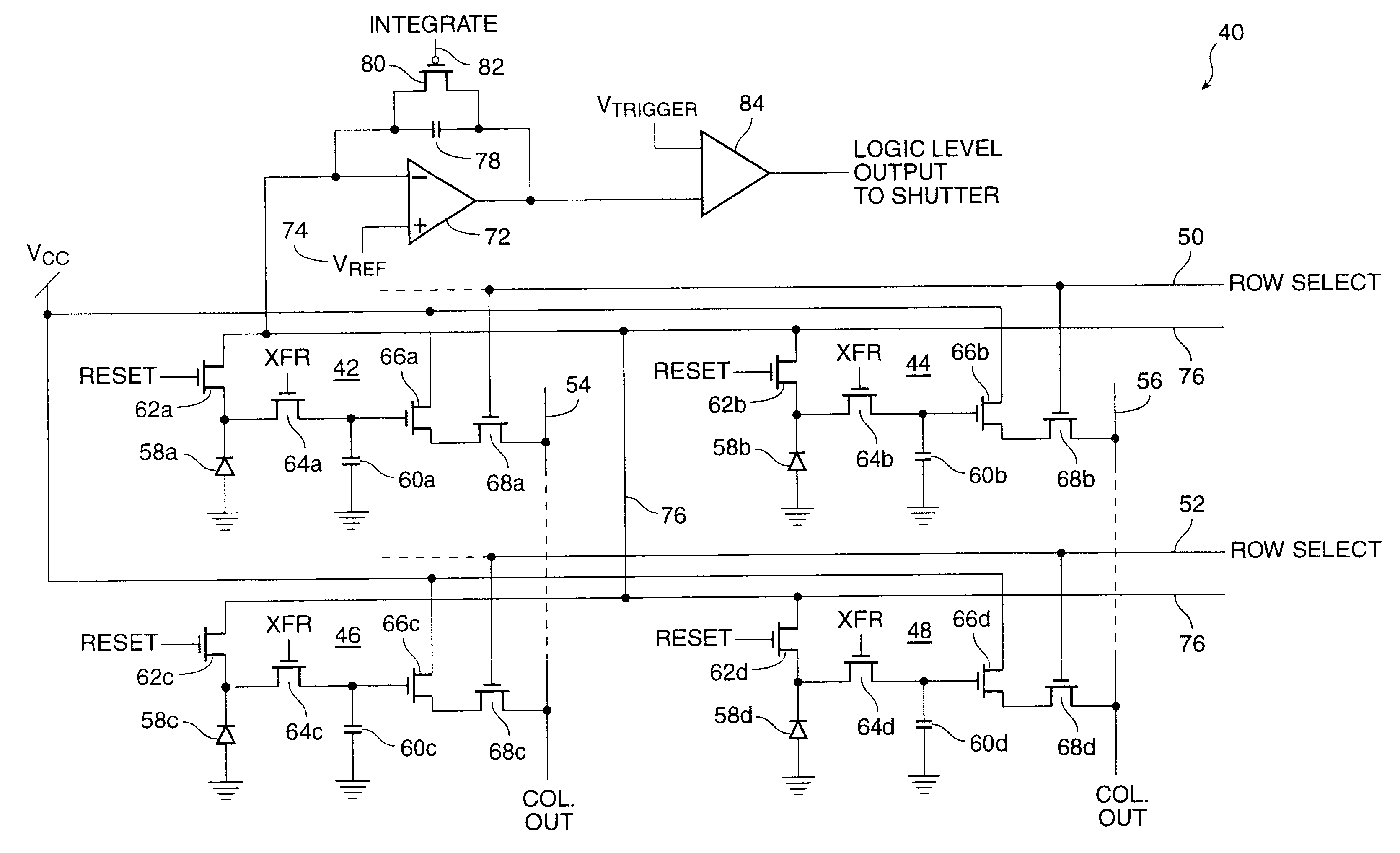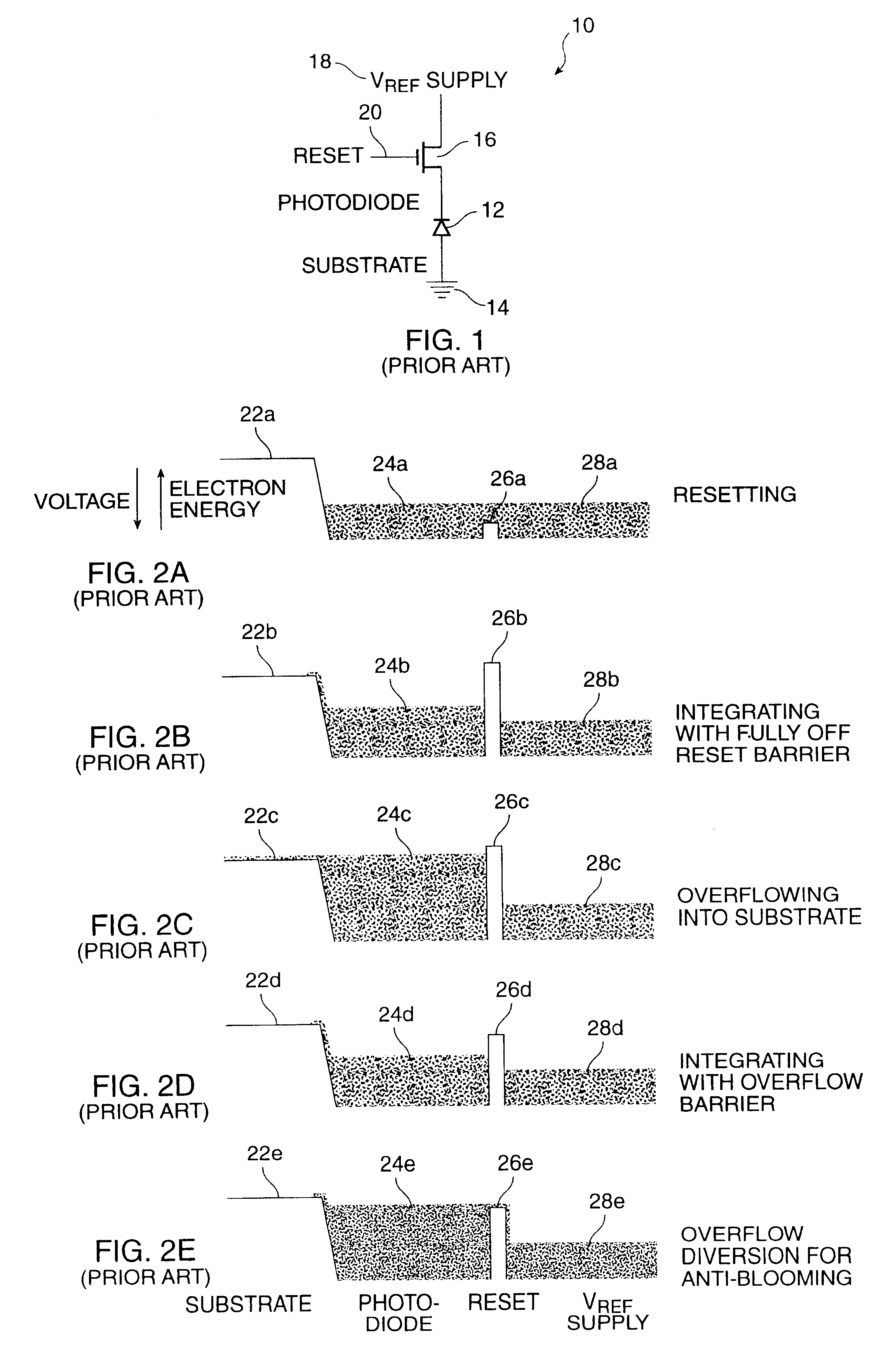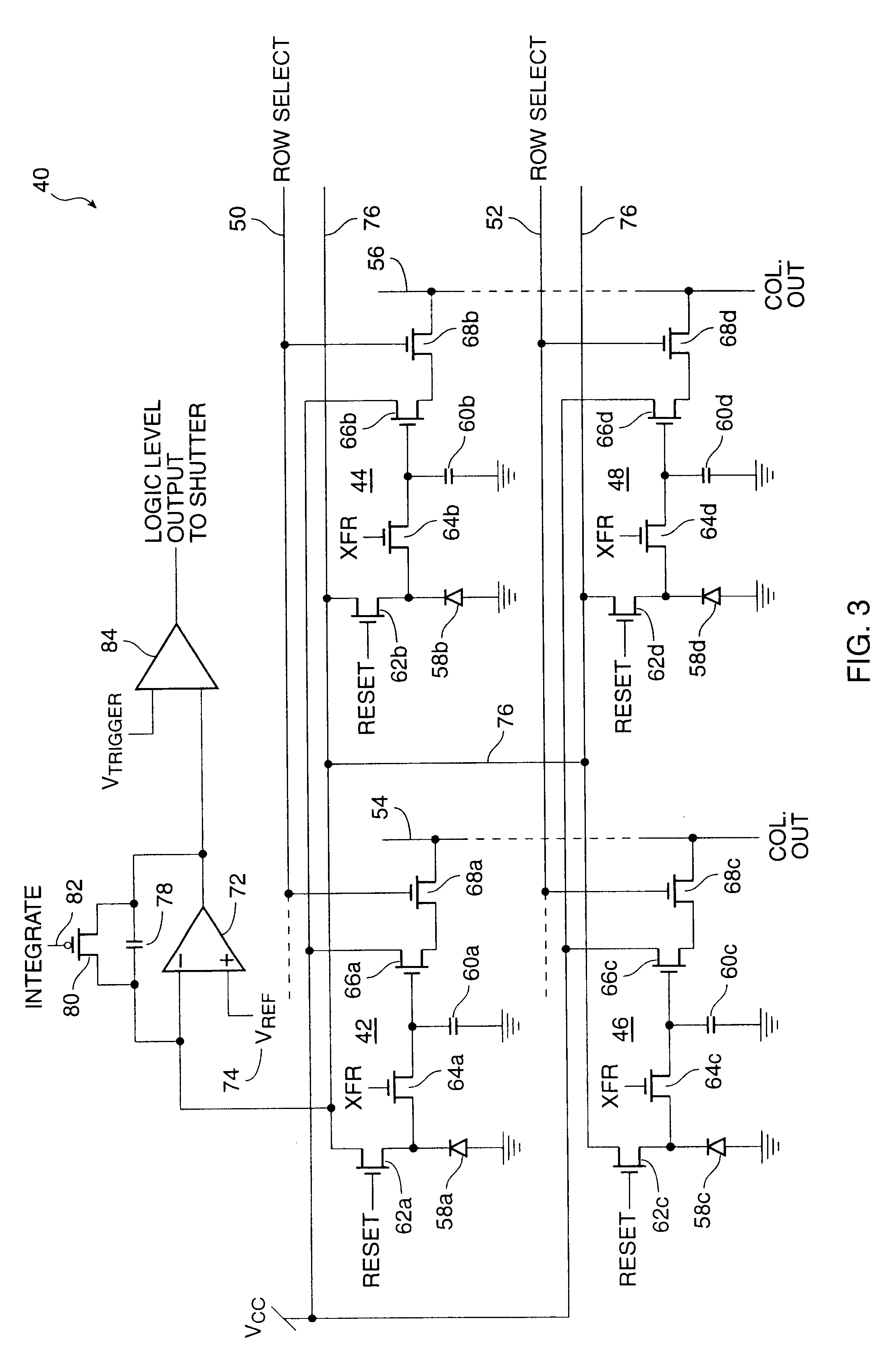Exposure control in electronic cameras by detecting overflow from active pixels
a technology of active pixels and exposure control, applied in the field of electronic cameras, can solve the problems of difficult implementation, limited to either a very slow operation, and second technique is not good for detecting the exact tim
- Summary
- Abstract
- Description
- Claims
- Application Information
AI Technical Summary
Benefits of technology
Problems solved by technology
Method used
Image
Examples
Embodiment Construction
Those of ordinary skill in the art will realize that the following description of the present invention is illustrative only and not in any way limiting. Other embodiments of the invention will readily suggest themselves to such skilled persons.
Frame-storage imaging arrays according to the present invention have the ability to begin and end an exposure interval very quickly under completely electronic control via timing logic signals. One aspect of the present invention exploits that capability by providing methods and circuits for detecting when the exposure is sufficient, and for automatically terminating the exposure interval very precisely. The present invention thereby responds to the actual light being received during the exposure interval, as detected by the actual detectors. This is believed to be an improvement over measuring the light with a separate detector or at a separate time.
The presently preferred embodiment of the invention takes advantage of the fact that the acti...
PUM
 Login to View More
Login to View More Abstract
Description
Claims
Application Information
 Login to View More
Login to View More - R&D
- Intellectual Property
- Life Sciences
- Materials
- Tech Scout
- Unparalleled Data Quality
- Higher Quality Content
- 60% Fewer Hallucinations
Browse by: Latest US Patents, China's latest patents, Technical Efficacy Thesaurus, Application Domain, Technology Topic, Popular Technical Reports.
© 2025 PatSnap. All rights reserved.Legal|Privacy policy|Modern Slavery Act Transparency Statement|Sitemap|About US| Contact US: help@patsnap.com



